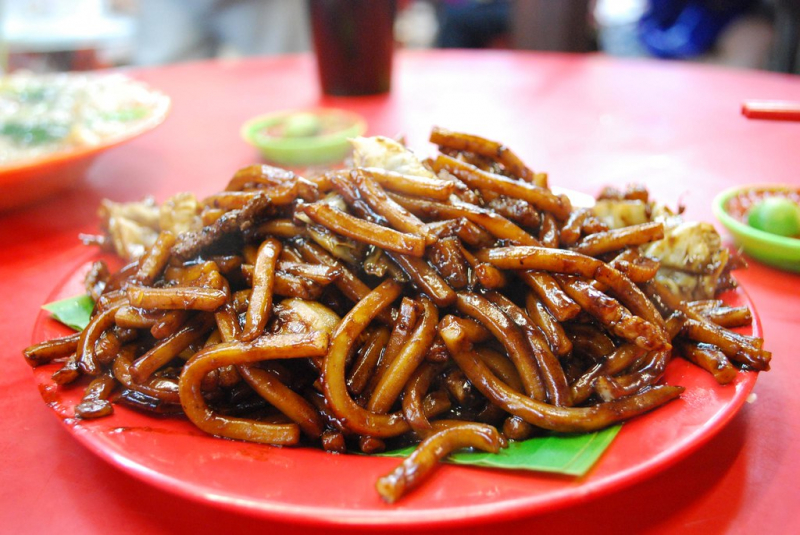Hokkien Mee
Nestled at the seventh spot of Malaysia's street food gems is Hokkien Mee. Drenched in flavor, this noodle dish tells stories of heritage and culinary craftsmanship.
Fujian Province in China is the birthplace of Hokkien Mee. Yet, when it touched Malaysian shores, the dish evolved. It embraced local spices and cooking styles, resulting in a distinct taste. Malaysia's Hokkien Mee carries Chinese roots but proudly wears a local badge.
The base? Thick yellow noodles. They soak up the rich sauce, becoming the dish's backbone. These noodles swim in a dark, aromatic gravy. The secret? A stock brewed with pork bones and prawn heads. It simmers for hours, extracting deep flavors.
Key players joining the noodles are prawns, pork, squid, and vegetables. They add texture and layers of taste. A hint of chili paste can spice things up, while crispy fried pork lard adds crunch. It's a play of textures and flavors, dancing in harmony.
One unique trait of Hokkien Mee is its two versions. In Kuala Lumpur, it's braised in dark soy sauce, resulting in a darker, sticky dish. Penang offers a soup variant, with a light, shrimp-infused broth. Both equally captivating, they showcase regional culinary twists.
Street stalls at night are the best spots for this dish. Smoke rises as vendors stir big woks. The aroma pulls you in. Watching Hokkien Mee prepared is a treat. It's a dance of ingredients meeting heat, crafted by skilled hands.
Many locals claim their favorite stall. Loyalties run deep. Each vendor has a tweak, a secret ingredient. And that's the beauty of Hokkien Mee. It's a canvas, allowing chefs to paint their flavors.
Key Takeaways:
- Origin: From Fujian, China, transformed in Malaysia.
- Flavor Profile: Rich, savory with elements of seafood and meat.
- Main Ingredients: Thick yellow noodles, prawns, pork, squid, and a deeply flavored stock.
- Serving Occasion: Perfect for night street food adventures and family dinners.











